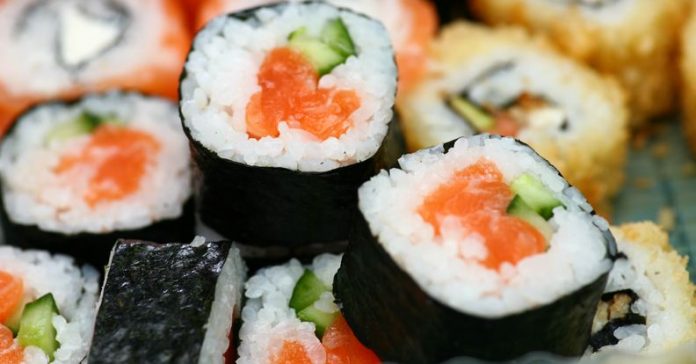Sushi, popular for centuries in Japan, has become immensely popular in the Western world in recent years. You may soon find yourself invited to enjoy sushi with friends at a sushi bar or restaurant.
Despite the common reaction of distaste at the prospect of eating raw fish, sushi is actually a simple and delicious food that can easily be enjoyed by adults, children, vegetarians and even the extremely squeamish.
Although sushis history goes back to the 7th century, the popular form that is served in modern sushi bars came into popularity in 1820, Tokyo.
Variations of the lengthy pickling process that was the original variety of sushi were made so that sushi could be enjoyed freshly made from a portable stall. This ‘fast-food’ approach has resulted in Sushi Bars gaining popularity all over the world.
Sushi is a very healthy meal made mostly with rice, fish and vegetables. Sushi should always be made with fresh ingredients.
Not only for the safety of the eater but for the flavors. The delicate flavors of rice, vegetables and fish are enhanced with healthy soya sauce, ginger and wasabi.
What are the health benefits of sushi?
The thin, toasted seaweed sheets, called Nori, used in rolled (maki) sushi are high in Vitamin A, B-complex, Niacin and Vitamin C. It is also good for digestion.
The rice used in making sushi, while not as healthy as brown rice, is still low in fat and sodium free while also being a complex carbohydrate which is needed as fuel for your body.
The various fish or meats used in sushi are excellent sources of protein and minerals.
Whether you’re eating vegetarian sushi or it is mixed with fish, the fresh, uncooked vegetables provide the vitamins and other nutrients you look for in a healthy diet.
Even the condiments served with sushi have health benefits.
While soya sauce has come under attack for certain additives that pose a potential health risk, naturally fermented soya sauce does not have this danger.
Soya, the main ingredient in soya sauce, has been linked to lower breast cancer and fewer menopausal symptoms in Asian cultures who use soy as a staple in their diets.
Soya is a source of high quality protein, low in saturated fats and is cholesterol free. Soya sauce is high in salt although low sodium versions are also available for those who require it.
Ginger, called gari, is often served alongside sushi and helps with digestion while also fighting bacteria. This is especially of interest to those concerned with the bacteria found in uncooked meat.
Wasabi, Japanese horseradish, can also kill bacteria found in raw fish and is often provided alongside sushi servings as a garnish or is included as in nigiri sushi.
If you are looking for a fast-food meal that is healthy or you just enjoy the flavors and art form of sushi, you are sure to benefit from a visit to your local sushi bar.

